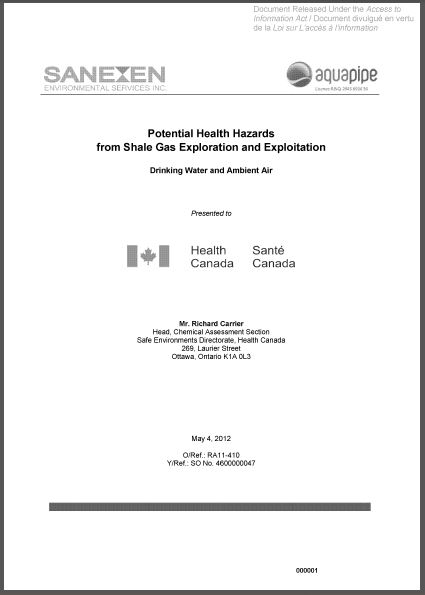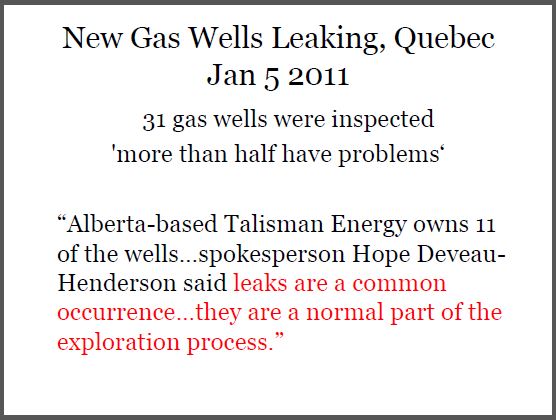How many decades have companies, their lobby groups like CAPP, synergized NGOs, regulators and politicians lied to the public, pimping natural gas as a clean and green “bridge fuel” while downplaying the leaks, dangers, and public health harms?
All surveys were performed at facilities operated by Seven Generations Energy Ltd. (henceforth 24 “the company”) in the Montney basin in Northwest Alberta. …
Initial surveys covered 36 sites which consisted of 30 well pads and 6 processing plants.
A total of 969 leaks and 686 vents were found in initial surveys….
Repeated leak detection and repair surveys reduce methane emissions over scale of years by Arvind P Ravikumar et al, 2020 Environ. Res. Lett. in press https://doi.org/10.1088/1748-9326/ab6ae1
Complete study at link.
Abstract
Reducing methane emissions from the oil and gas industry is a critical climate action policy tool in Canada and the US. Optical gas imaging-based leak detection and repair (LDAR) surveys are commonly used to address fugitive methane emissions or leaks. Despite widespread use, there is little empirical measurement of the effectiveness of LDAR programs at reducing long-term leakage, especially over the scale of months to years. In this study, we measure the effectiveness of LDAR surveys by quantifying emissions at 36 unconventional liquids-rich natural gas facilities in Alberta, Canada. A representative subset of these 36 facilities were visited twice by the same detection team: an initial survey and a post-repair re-survey occurring ~0.5-2 years after the initial survey. Overall, total emissions reduced by 44% after one LDAR survey, combining a reduction in fugitive emissions of 22% and vented emissions by 47%. Furthermore, >90% of the leaks found in the initial survey were not emitting in the re-survey, suggesting high repair effectiveness. However, fugitive emissions reduced by only 22% because of new leaks that occurred between the surveys. This indicates a need for frequent, effective, and low-cost LDAR surveys to target new leaks. The large reduction in vent emissions is associated with potentially stochastic changes to tank-related emissions, which contributed ~45% of all emissions. Our data suggest a key role for tank-specific abatement strategies as an effective way to reduce oil and gas methane emissions. Finally, mitigation policies will also benefit from more definitive classification of leaks and vents.
NMED discovers more potential methane emission violations by Kendra Chamberlain, Jan 16, 2020, The NM Political Report
The New Mexico Environment Department (NMED) announced more possible emission violations produced by oil and gas operations around the state. The department said it acquired video footage collected by citizens using forward-looking infrared (FLIR) cameras documenting methane and other air contaminants. NMED believes the emissions depicted in the video footage are “potential violations of existing state permits or regulations,” the department said in a statement. [why wasn’t/isn’t the department doing the emissions monitoring?]
NMED is sending written notices to oil and gas operators about the emissions. Oil and gas producers will have 14 days to correct the issues. If those issues are not corrected within that time frame, NMED said it may launch an investigation or initiate civil enforcement of the violations, which could include assessing monetary penalties to producers who are in violation.
The FLIR footage has been uploaded to the state’s online interactive methane map. The map also contains FLIR footage documenting “significant emissions” collected during two recent flyover compliance inspections conducted by NMED and the EPA.
During two flyover compliance inspections in September and October 2019, officials identified and documented emissions leaks from flares, tanks and other types of oil and gas equipment. Officials found 111 of over 5,300 storage tanks were emitting methane and other pollutants, and 13 of the 530 flares observed were unlit and emitting methane.
NMED said the department is now reviewing that footage to determine if any violations had taken place.
“The Department is addressing oil and natural gas emissions through innovative compliance assurance measures [create ways to let companies keep on leaking, polluting and harming our environment and public health?] today as we invest in methane regulations for tomorrow,” said NMED Cabinet Secretary James Kenney in a statement. “The emissions documented in many of these videos are unacceptable to this Department and pose significant health and safety risks to New Mexico communities and employees of these companies.”
Environmental group Earthworks praised NMED for enforcing emissions rules in oil and gas activity in the state.
Earthworks’ Colorado and New Mexico field advocate Nathalie Eddy said NMED’s notices “suggest that New Mexico is putting the public interest ahead of — or at least on equal footing with — the oil and gas industry’s pursuit of profits.”
“NMED’s enforcement letters recognize that New Mexicans living with oil and gas production — involuntarily and continuously monitoring it — are important allies in protecting their own health & environment from oil and gas pollution,” Eddy said. “Today’s news is a concrete validation that community and community-advocate complaints are a vital tool to reign in dangerous oil and gas pollution.”
The New Mexico Oil and Gas Association (NMOGA) is supportive of NMED’s efforts to enforce emissions compliance among oil and gas producers.
“We are constantly working to reduce our emissions and environmental impacts, and data collected by the EPA shows that we’re making progress while continuing to produce more oil and natural gas,” NMOGA spokesperson Robert McEntyre told NM Political Report in an email. “While operators strive to fully comply with the law, we respect the role NMED plays to ensure a fair and level playing field for the industry.”
Refer also to:
The Leaks that threaten the clean image of natural gas
2018 CAPP propaganda:


2017: Texas: Natural gas leaks (from aging leaking gas well?) into abandoned water well in Denton

Fracing the Caprock to Hell: Athabasca Chipewyan Knew that Cracked Caprock Could Cause Bitumen Leaks in Cold Lake – Canadian Natural Resources Ltd. Finally Agrees Think of the methane and ethane leaks throughout frac fields in NA from companies, enabled by corrupt regulators, frac’ing aquifers and the caprock.
2014: New Study: Drilling operations release plumes of methane 100 to 1,000 times the rate the EPA expects; drilling through coalbeds might be causing the high leakage [and contamination of groundwater?]
2012: The ‘entire natural gas system’ is driving methane emissions — MIT study
2012: Independent study finds significant fault line methane leaks near PA natural gas operations

2011: Inspectors found leaks at shale wells, government report says



Slides from Ernst presentations
